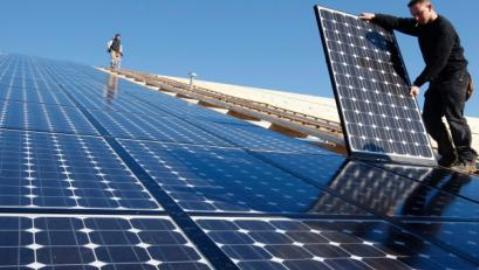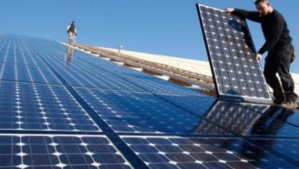Earlier oil producing economies have always resisted the tendency towards developing alternative energy sources. But falling oil prices coupled with the fact that carbon is fueling the catastrophe that is climate change, the march towards clean energy in Latin America is now making steady progress, as per regional experts.
Most Latin American countries have woken up to the hazards that fossil fuel creates and have set medium to long-term targets towards meeting their energy supply and demands from green energy. However, as per Hugo Ventura, who heads the Energy and Natural resources unit of the Economic Commission for Latin America and the Caribbean (ECLAC), there are two primary factors which could act as a brake for the growth towards alternative energy sources.
“One of these factors is that countries are committed to increasing the contribution of renewables, in order to diversify their energy mix, decrease dependence on fossil fuels and reduce carbon dioxide emissions because of climate change. The other aspect is that players in the energy sector are taking the long-term view,” said Mr. Ventura.
As per the World Wind Energy Association (WWEA), renewable energy source in Southern America is going strong. As per its report, preliminary figures were “very bright” and “wind power investment is still speeding up at an enormous pace.”
“Especially the new markets in Latin America as well as in Africa are reflecting the importance which wind power is now playing in the electricity supply, as a cheap and reliable power source,” said Stefan Gsänger, Secretary General of WWEA.
The falling price of fossil fuel is having a detrimental impact on those economies, such as Bolivia, Mexico, Argentina, Ecuador, Brazil, Peru, Venezuela and Colombia, wherein oil was a major component of its exports. Their state oil companies are now facing severe difficulties with respect to their planning operations. Whereas countries such as Chile, which mostly imports its electricity requirements are reaping the benefits of low fuel costs.
Given the state of affairs, renewable energy sources are now almost at par with their fossil fuel cousins, such as natural gas, states a report tabled by the International Renewable Energy Agency (IRENA), which is based out of Abu Dhabi. It further goes on to say that if the environmental and health costs are factored in the pricing and compared to costs from fossil fuel, renewable energy becomes a lot more cost effective.
As per the IRENA study, the average cost of electricity from solar energy has come down drastically and is now comparable to that of the cost of power generated from fossil fuels. Case in point, in 2013-2014, the cost of electricity generated out of solar power plants came to 11 cents per kilowatt-hour in South America. However, it was more than 31 cents in the Caribbean and in Central America while it was 12 cents in North America.
However when you compare the average cost of power generated by hydroelectric with that of solar, the cost of hydroelectric in South America are far more cost effective with just 4 cents per KWh.
Although hydropower is the largest source of renewable energy in South America, because of its vulnerability to drought, such as the one Brazil is facing currently, it’s not very attractive in spite of it being cost effective. However, what is lucidly clear to Latin American countries is the fact that given the low cost of renewable power, more investors will chip and fund growth.
“At these prices, there is a viable niche for renewable power. Investors could find stability in the field of electricity. There is unstoppable inertia; many projects under construction will soon be operating, so growth is continuing. There are renewable energy tendering schemes in the pipeline that are not going to stop,” said Mr. Ventura.
South America is already seeing a transition towards a matrix of renewable energy sources coming up in the region. Argentina is already projecting to meet 8% of is energy requirements though renewable sources. By 2025, Chile would have met 20% of its energy requirement though alternative energies. Mexico wants to meet 23% of its energy requirement from clean energy sources by 2018, 25% by 2024 and 26% by 2027.
References:
http://www.ipsnews.net/2015/03/renewable-energies-in-latin-america-weather-low-oil-prices/
Most Latin American countries have woken up to the hazards that fossil fuel creates and have set medium to long-term targets towards meeting their energy supply and demands from green energy. However, as per Hugo Ventura, who heads the Energy and Natural resources unit of the Economic Commission for Latin America and the Caribbean (ECLAC), there are two primary factors which could act as a brake for the growth towards alternative energy sources.
“One of these factors is that countries are committed to increasing the contribution of renewables, in order to diversify their energy mix, decrease dependence on fossil fuels and reduce carbon dioxide emissions because of climate change. The other aspect is that players in the energy sector are taking the long-term view,” said Mr. Ventura.
As per the World Wind Energy Association (WWEA), renewable energy source in Southern America is going strong. As per its report, preliminary figures were “very bright” and “wind power investment is still speeding up at an enormous pace.”
“Especially the new markets in Latin America as well as in Africa are reflecting the importance which wind power is now playing in the electricity supply, as a cheap and reliable power source,” said Stefan Gsänger, Secretary General of WWEA.
The falling price of fossil fuel is having a detrimental impact on those economies, such as Bolivia, Mexico, Argentina, Ecuador, Brazil, Peru, Venezuela and Colombia, wherein oil was a major component of its exports. Their state oil companies are now facing severe difficulties with respect to their planning operations. Whereas countries such as Chile, which mostly imports its electricity requirements are reaping the benefits of low fuel costs.
Given the state of affairs, renewable energy sources are now almost at par with their fossil fuel cousins, such as natural gas, states a report tabled by the International Renewable Energy Agency (IRENA), which is based out of Abu Dhabi. It further goes on to say that if the environmental and health costs are factored in the pricing and compared to costs from fossil fuel, renewable energy becomes a lot more cost effective.
As per the IRENA study, the average cost of electricity from solar energy has come down drastically and is now comparable to that of the cost of power generated from fossil fuels. Case in point, in 2013-2014, the cost of electricity generated out of solar power plants came to 11 cents per kilowatt-hour in South America. However, it was more than 31 cents in the Caribbean and in Central America while it was 12 cents in North America.
However when you compare the average cost of power generated by hydroelectric with that of solar, the cost of hydroelectric in South America are far more cost effective with just 4 cents per KWh.
Although hydropower is the largest source of renewable energy in South America, because of its vulnerability to drought, such as the one Brazil is facing currently, it’s not very attractive in spite of it being cost effective. However, what is lucidly clear to Latin American countries is the fact that given the low cost of renewable power, more investors will chip and fund growth.
“At these prices, there is a viable niche for renewable power. Investors could find stability in the field of electricity. There is unstoppable inertia; many projects under construction will soon be operating, so growth is continuing. There are renewable energy tendering schemes in the pipeline that are not going to stop,” said Mr. Ventura.
South America is already seeing a transition towards a matrix of renewable energy sources coming up in the region. Argentina is already projecting to meet 8% of is energy requirements though renewable sources. By 2025, Chile would have met 20% of its energy requirement though alternative energies. Mexico wants to meet 23% of its energy requirement from clean energy sources by 2018, 25% by 2024 and 26% by 2027.
References:
http://www.ipsnews.net/2015/03/renewable-energies-in-latin-america-weather-low-oil-prices/






